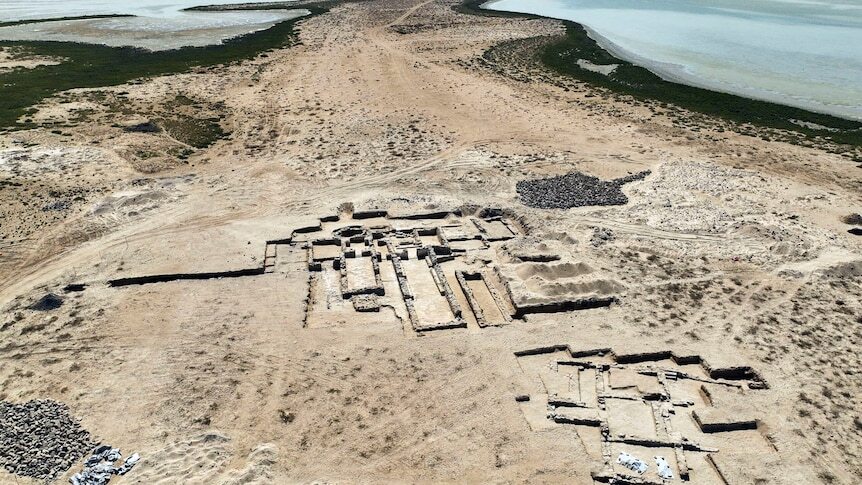An ancient Christian monastery — possibly dating as far back as the years before Islam spread across the Arabian Peninsula — has been discovered on an island off the coast of the United Arab Emirates (UAE).
The monastery on Siniyah Island, part of the sand-dune sheikhdom of Umm al-Quwain, sheds new light on the history of early Christianity along the shores of the Persian Gulf.
It is the second monastery dating back more than 1,400 years to have been found in the UAE.

Scholars believe they became lost to history as Christians slowly converted to Islam as that faith grew more prevalent in the region.
Nowadays, Christians remain a minority across the wider Middle East, although Pope Francis was arriving in nearby Bahrain on Thursday to promote interfaith dialogue with Muslim leaders.
For Timothy Power — an associate professor of archaeology at the United Arab Emirates University, who helped investigate the newly discovered monastery — the UAE is a “melting pot of nations.”
“The fact that something similar was happening here 1,000 years ago is really remarkable, and this is a story that deserves to be told,” he said.
Monastery’s foundation dates as early as AD 534
The monastery sits on Siniyah Island, which shields the Khor al-Beida marshlands in Umm al-Quwain, an emirate some 50 kilometres north-east of Dubai along the coast of the Persian Gulf.
Siniyah Island has a series of sandbars coming off it, like crooked fingers. On one, to the island’s north-east, archaeologists discovered the monastery.
Carbon dating of samples found in the monastery’s foundation date between AD 534 and 656.
Islam’s Prophet Muhammad was born around 570 and died in 632, after conquering Mecca, in present-day Saudi Arabia.
Viewed from above, the monastery on Siniyah Island suggests early Christian worshippers prayed in a single-aisle church at the monastery.
Rooms appear to hold a baptismal font, as well as an oven for baking bread or wafers for communion rites. A nave also likely held an altar and an installation for communion wine.
Next to the monastery sits a second building with four rooms, likely around a courtyard — possibly the home of an abbot or even a bishop in the early church.
Historians say early churches and monasteries spread along the Persian Gulf to the coasts of present-day Oman and all the way to India.
Archaeologists have found other similar churches and monasteries in Bahrain, Iraq, Iran, Kuwait and Saudi Arabia.
In the early 1990s, archaeologists discovered the first Christian monastery in the UAE, on Sir Bani Yas Island, which is now a nature reserve and site of luxury hotels off the coast of Abu Dhabi, near the Saudi border.
Similarly, it dates back to the same period as the new find in Umm al-Quwain.
However, evidence of early life along the Khor al-Beida marshlands in Umm al-Quwain dates as far back as the Neolithic period, suggesting continuous human inhabitance in the area for at least 10,000 years, Mr Power said.
The area near the marshland is more known for the low-cost liquor store at the UAE’s Barracuda Beach Resort.
Mr Power said development spurred on the archaeological work that uncovered the monastery. That site and others will be fenced off and protected, he said.
“It’s a really fascinating discovery because, in some ways, it’s hidden history. It’s not something that’s widely known,” he said.












